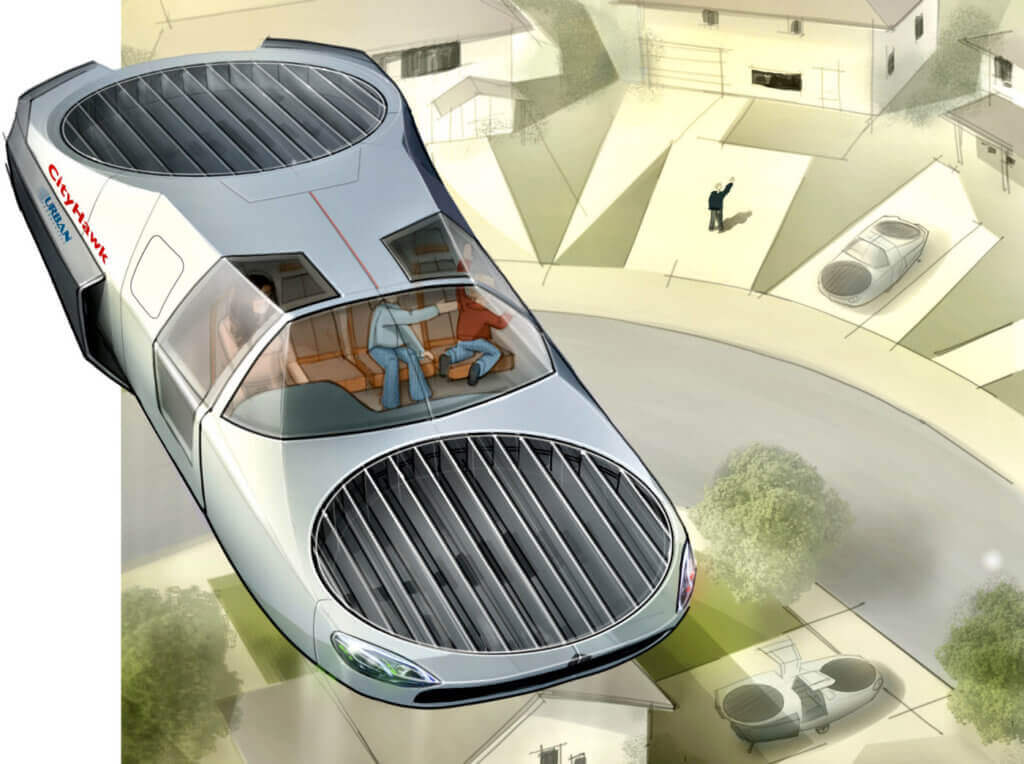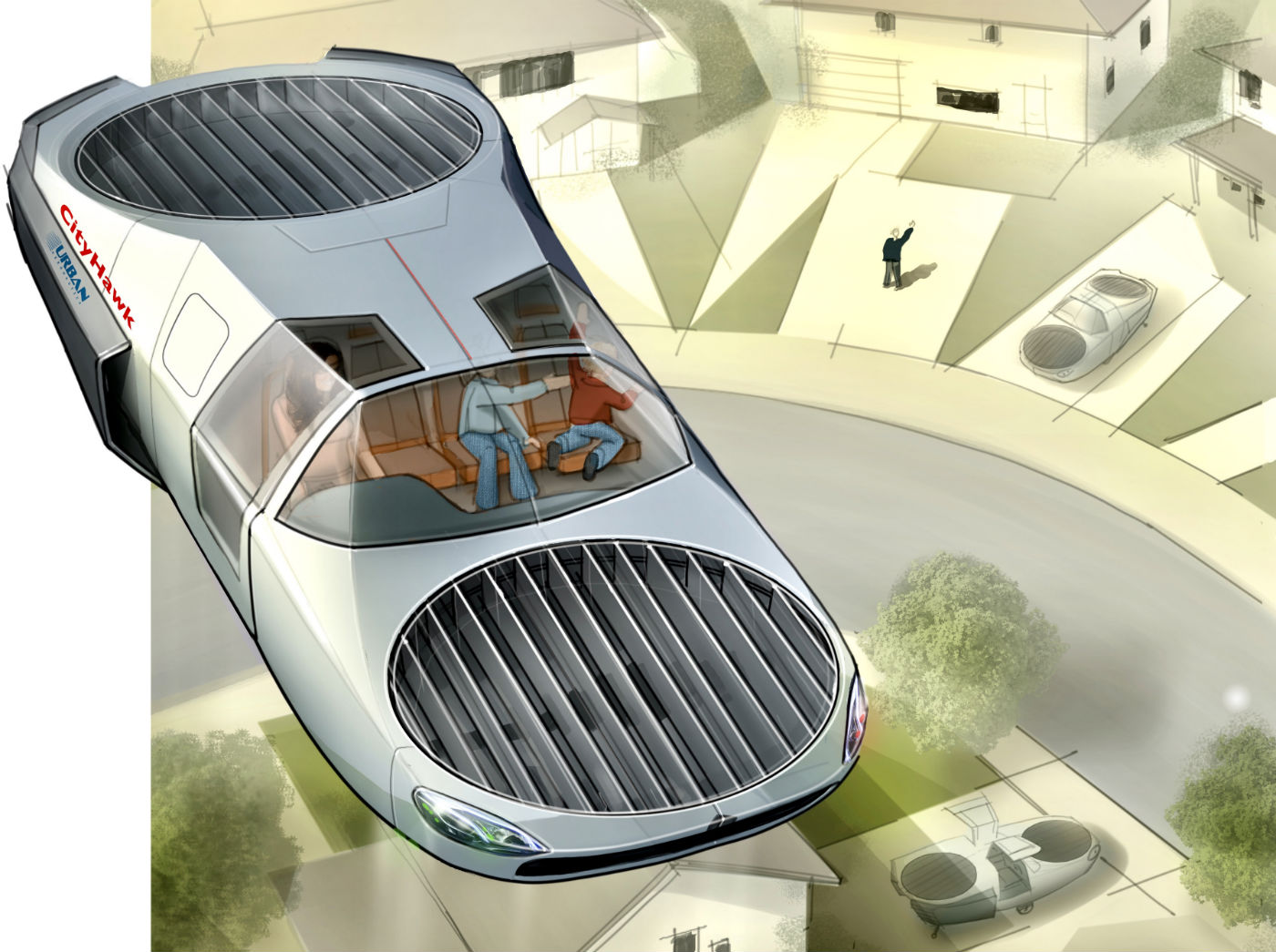Metro Skyways Ltd. (MSL), a subsidiary of Urban Aeronautics, plans to launch the design and development of a four-passenger, vertical takeoff and landing (VTOL) flying car based on Urban Aeronautics’ internal rotor, Fancraft technology. The vehicle will initially be powered by jet fuel, but will be designed from the outset to convert to liquid hydrogen and eventually also to 700 bar compressed hydrogen, once such options become commercially feasible.

MSL was established by Urban Aeronautics in 2013 to focus exclusively on developing Fancraft for the manned, civil market. MSL will develop the CityHawk under a license to utilize UrbanAero’s 39 patents covering all aspects of Fancraft technology.
CityHawk will be designed to meet Federal Aviation Administration (FAA) and European Aviation Safety Agency (EASA) certification standards for manned VTOL aircraft. CityHawk is unique in combining a compact, car-sized design that has a four-passenger capacity, no exposed rotors or wings, no batteries and potential for zero carbon emissions. Hydrogen’s only byproduct is pure H2O.
Perhaps most critical is that CityHawk achieves these groundbreaking qualities while meeting all design criteria that are the basis for eventual FAA/EASA certification. This paves the way for true, unrestricted commercial viability.
The development of CityHawk is expected to take five years and draws on UrbanAero’s experience in developing and flight testing its one ton, unmanned Cormorant that is being developed by the company’s second subsidiary, Tactical Robotics Ltd. CityHawk will be similar to Cormorant in shape and size.
Cormorant has so far accumulated in excess of 200 flight tests. CityHawk’s first public demonstration will take place at an airshow shortly after completion of development.
While CityHawk will initially be piloted by a human pilot, the vehicle’s flight control and flight management systems will be capable of a high degree of autonomy from the outset. The technology is being developed and tested on Tactical Robotics’ Cormorant prototype, which already flies fully autonomously.
As the technology of autonomy and regulatory infrastructure mature, CityHawk will eventually transport passengers robotically. CityHawk’s future, groundbreaking hydrogen power may rely on direct feed of hydrogen into a state-of-the art (FAA/EASA certified) turboshaft engine as an alternative to fuel cells, power conditioners, cables and electric motors. This direct and compact conversion of hydrogen into shaft power, combined with UrbanAero’s unique Fancraft aerodynamics, makes CityHawk’s unique size and passenger capacity possible, while keeping an FAA/EASA certified primary power unit at the ‘heart of the machine’.









